Post Ten - Denmark: Mon to Copenhagen
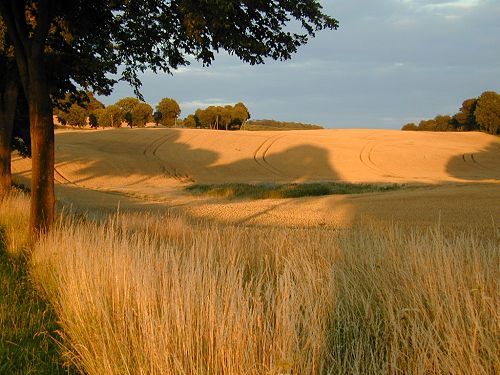 Rolling Wheat Rolling WheatWe ferried across the Baltic from Germany and landed in Denmark's rolling Zealand countryside, on the southern island of Lolland. Eastern Denmark is a cluster of islands, and our destination that evening was a quaint youth hostel out in the countryside on Mon, another island a few hours' drive north. The sun ambled across the crisp, blue, afternoon sky as we drove through small towns, over bridges, past sprawling fields. As the sun dipped toward the western horizon, the light on the fields took on a mellow, warm cast, and the wheat shone like burnished copper. Scott, ever with his photographer's hat on, had the presence of mind to stop the car and take pictures. His silhouette against the golden evening sky filled me with an exhilarating sense of anticipation. We were finally in Scandinavia, headed to meet my parents in Copenhagen. The sun was shining, and life was good. |
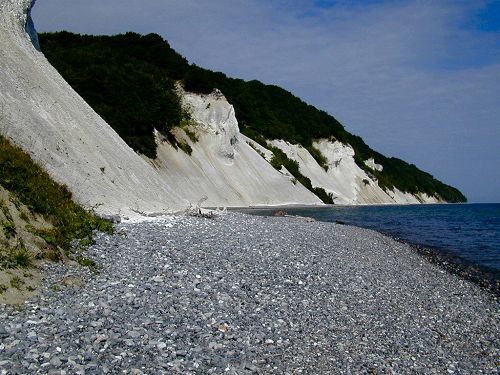 Baltic Seashore (Mon Klint) Baltic Seashore (Mon Klint)The milk-white, chalk cliffs of this seashore came as a blinding surprise as we emerged from the shady woods lining Mon's eastern coast. We'd barely touched down in Denmark, and here was another beautiful landscape. |
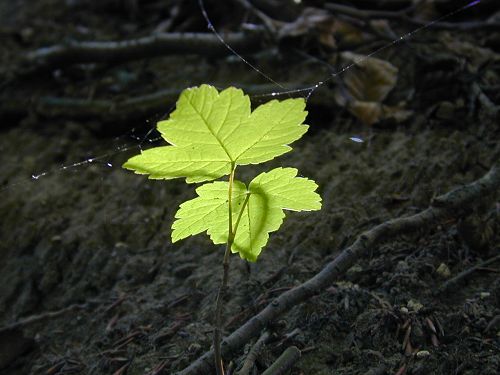 Fairy Woodland Fairy WoodlandThis southern island has the dreamlike, pastoral air of a fairy tale. Perhaps that's because the writings of Hans Christian Andersen, arguably the greatest fairy-tale writer of all time, has planted these landscapes in children's heads for hundreds of years. His childhood home, just a few miles away on Mon, must have been a profound source of inspiration for his settings. The light shining through the canopy of the tall trees dappled the floor of the silent, shady forest with a sea of gently moving lights, casting an ethereal pattern in the calm. I was reminded yet again why people believe in gnomes, atomies, trolls, and dryads. What was that movement just out of the corner of my eye? |
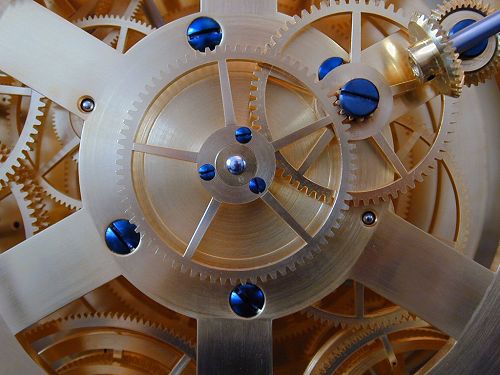 Danish Timepiece Danish TimepieceAugust 3 was Mom's birthday, and we must have walked five miles that day in our search for the best of Copenhagen. Our first stop was city hall. Somewhat known for its architecture, this edifice is more famous for Jens Olsen's World Clock. This timepiece resides behind glass in a temperature-controlled room near the building's front door. Built in the late 1800s, it measures about five feet tall and eight feet long. You're looking at a more interesting, detailed picture of the fine workings of the clock. Mr. Olsen took 27 years to perfect its 570,000-year calendar, which plots eclipses of the moon and sun, solar time, local time, and various planetary orbits. |
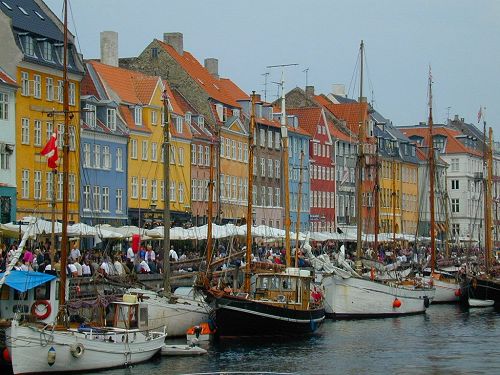 Nyhavn, Copenhagen Nyhavn, CopenhagenThis picturesque street is rivals the Littler Mermaid for the most popular site in Copenhagen-and for good reason. It looks much the same as it did in the 1700s, when it was a raucous port where goods were loaded and unloaded, sailors drank, spent their sea pay, and brawled, and ladies of the night hustled. Three of the buildings along this street were residences of Hans Christian Andersen during that time (I guess even fairy-tale writers need to have their fun). The wooden boats you see tied to the piers are the clearest reminder that Nyhavn was once the destination of sailors who had just arrived on ships from the Baltic and beyond. It still bustles with life as one of Copenhagen's more popular streets, both for locals and tourists. |
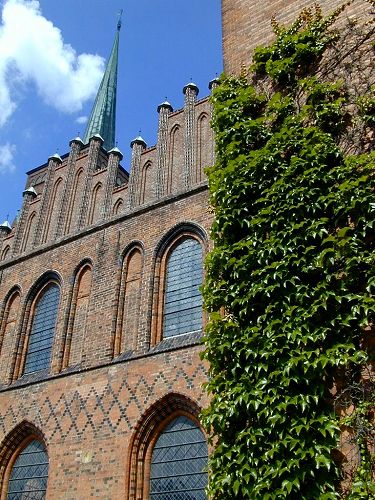 Christiania ChristianiaThis building reminds me of our tour of Christiania, Copenhagen's experimental "free society." This independently governed borough has existed since the early 1970s, when a group of young and homeless people squatted on an abandoned military installation and set up an alternative community that would live off the land it occupied, pay no taxes, and police itself. Christiania has had lots of problems, but it still exists, ever controversial. Laws are comprised of about 10 rules, such as "no guns" and "no hard drugs," that make up the societal code. A council of elected officials meet regularly to discuss community issues and resolve problems. But what really attracts attention is its drug tolerance. Hash is sold openly from booths in a market on "Pushers' Street." The Danish police tolerate the hash dealers, and in turn, the dealers operate as the borough's police, keeping the streets free of criminals and hard drug dealers. We took a two-hour walking tour, past makeshift homes, through local businesses, and of course, down "Pusher's Street." Booth after booth of men and women hawked slices off of brown hash bricks from all over the world. If I thought my parents would be shocked, I was disappointed. They might as well have been walking through a bake sale, the way they politely examined the wares from a distance. |
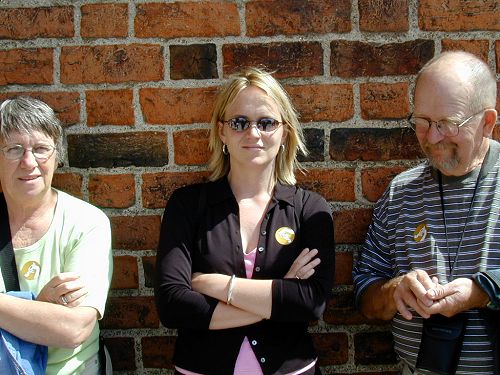 Mom, Karen, Dad on the Rundetarn Mom, Karen, Dad on the RundetarnThe walk up to the top of this tower was well worth the 360-degree view of Copenhagen. Originally built as an observatory, the tower boasts a wide, gently spiraling stone ramp that ascends to the top, filling much of the structure's interior. The ramp made it easier for royalty to ride their horses to the top. |
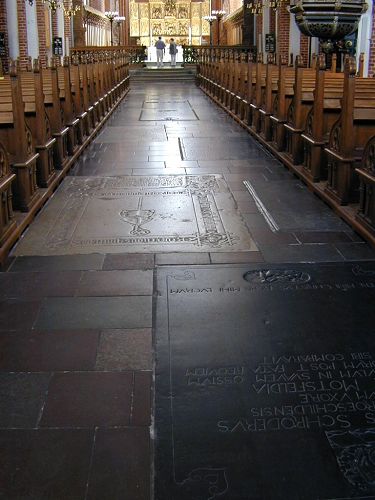 Magnificent Mausoleum Magnificent MausoleumThe Roskilde Domkirke is a stately church with a history dating back to 1170, but it's also one of the more impressive "tombs" you'll see in Europe. The remains of 20 Danish kings and 17 Danish queens lie in the walls, chapels, and floor. Coffins adorned in ebony, alabaster and other marbles, gold, silver, and velvet reside in ornate chapels off the nave. |
Next Up: Denmark: Roskilde to the Coast
Copyright 2001
Scott & Karen Semyan